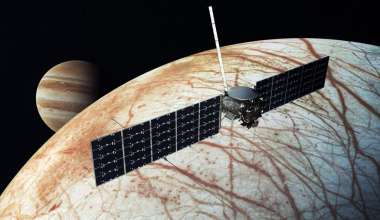The Aerospace Corporation convened a two-day workshop with government, industry, and the international space community to address challenges and solutions for identifying and tracking the growing number of CubeSats launched into orbit.
Technological advancements and cost reductions have led to an increase in CubeSat launch tempo by a wide spectrum of owners and operators. While this has aided in the democratization of space, the growth has also caused an increase in confusion over the identification, tracking, and debris mitigation approaches involving CubeSats.
The affordability of CubeSats has made it easier for more parties to launch and enabled an increase in large launch payloads involving multiple CubeSat owners. However, there is an alarming lack of standards in place for tracking and identifying CubeSats. As a consequence of this, owners and operators cannot always identify their own satellites, and “dead” satellites become orbital debris, placing mission success and the safety of a $1 trillion space economy at stake.
This January, The Aerospace Corporation convened government, industry, academia, and international stakeholders for a two-day event to address these challenges and discuss measures to mitigate CubeSat confusion. The discussions touched on many of the key issues highlighted in CubeSat Confusion: Technical and Regulatory Considerations, a recently published paper from Aerospace’s Center for Space Policy and Strategy.
The conference included attendees from all over the world, representing U.S. government space and defense agencies, commercial space, the insurance industry, academia, and the international community (including representatives from the European Space Agency; United Kingdom Space Agency; New Zealand’s Ministry of Business, Innovation and Employment; France’s National Centre for Space Studies (CNES); and the United Nations).
“This business of identifying and tracking [CubeSats] is incredibly important,” said Adm. Cecil D. Haney, US Navy (Ret.) and member of the Aerospace Board of Trustees, in his opening remarks to attendees. “Even at the high school level, you’re involved with small satellites. I know you all have had your share of headaches and concerns in this particular area, and I see that, given this trend, there are some things that I hope can parallel to the point where we can get some regulatory rules of the road to follow, particularly as we can look at how congested space has become.”
Conference panelists identified several factors contributing to CubeSat confusion, including the lack of uniform standards and best practices for CubeSats and the need for operators to be able to identify and track CubeSats after deployment.
“The problem is multifaceted,” said Dr. Andrew Abraham, Engineering Manager in Aerospace’s Mission Analysis and Operations. “You have an expanding, diverse community of CubeSat owner-operators—from large companies down to middle and high schools—trying to deploy single CubeSats or large, proliferated LEO constellations. How do you track all these CubeSats, identify which satellites belong to whom, in order to coordinate their behaviors and activity and make sure they can all fly and operate safely in space?”
Panel discussions yielded several possible solutions to these challenges. The limited number of launch states worldwide presents an opportunity to set a baseline and establish uniform standards. New Zealand, for example, as a launch state has adopted U.S. regulations as baselines for its own requirements.
Possible solutions for distinguishing CubeSats from the ground include ID tags—either reflecting optical wavelengths of light or radar—or flashes of visible light. Another set of technologies would encode satellite ID and GPS signals, and radio them to the ground. Each solution has a set of pros and cons, and the market is still developing around these options, even as the need is widely recognized.
“If you can’t identify CubeSats, it is difficult for owner-operators to contact them,” Dr. Mark Skinner, Senior Project Leader for Space Traffic Management at Aerospace. “If it is not functioning in space, it may not be identified for several months, if ever. This is the nature of CubeSat confusion: which one is which? You must ensure they function, and if they do not, you must be able to tell them apart.”
The space community does not need dead, unidentified CubeSats on orbit, Skinner said, and he noted there is a regulatory desire from the Federal Communications Commission to get out ahead of the issue. Some conference panelists suggested a light regulatory touch on the policy front would help set attainable standards while preserving flexibility for private companies. A U.S. Space Force panel also underscored the need for CubeSat trackability.
Experts also recommended working through international forums—such as the UN Committee on the Peaceful Uses of Outer Space (UN COPUOS), the International Organization for Standardization (ISO) and the Inter-Agency Space Debris Coordination Committee (IADC)—to bring the global space community to consensus on standards and best practices for achieving long-term sustainability guidelines to encourage safety and success. Through collaboration, industry participants can work together to adopt norms and establish pilot programs in order to provide leadership and demonstrate workable solutions.
“As one attendee of our event pointed out, luck has been a large part of the past strategy involving space debris,” Skinner said. “We felt that going forward, we didn’t want that to be part of the strategy for CubeSats, so we hosted this industry day in part to get ahead of the problem and come up with mitigation schemes with the CubeSat community.”









